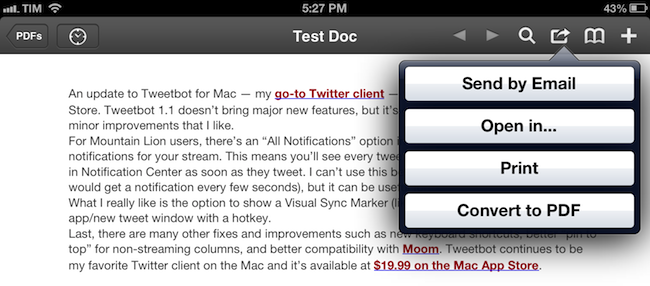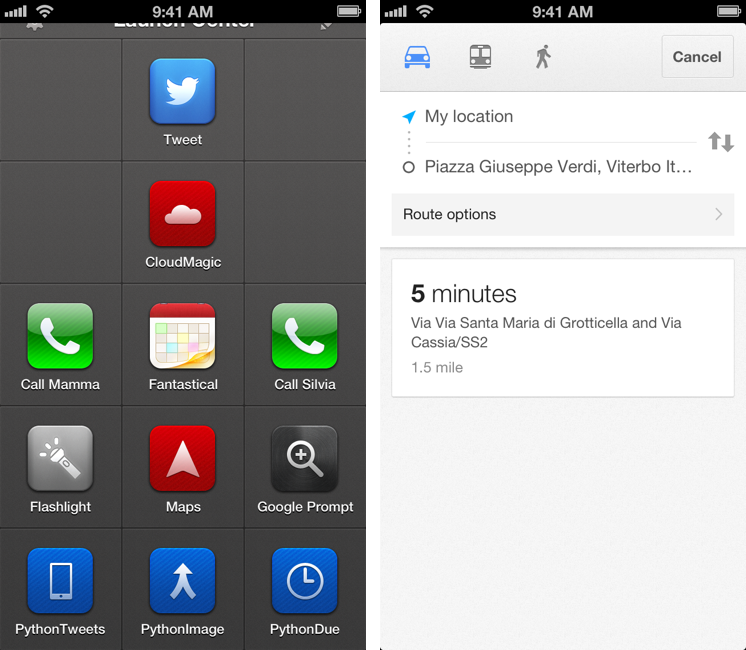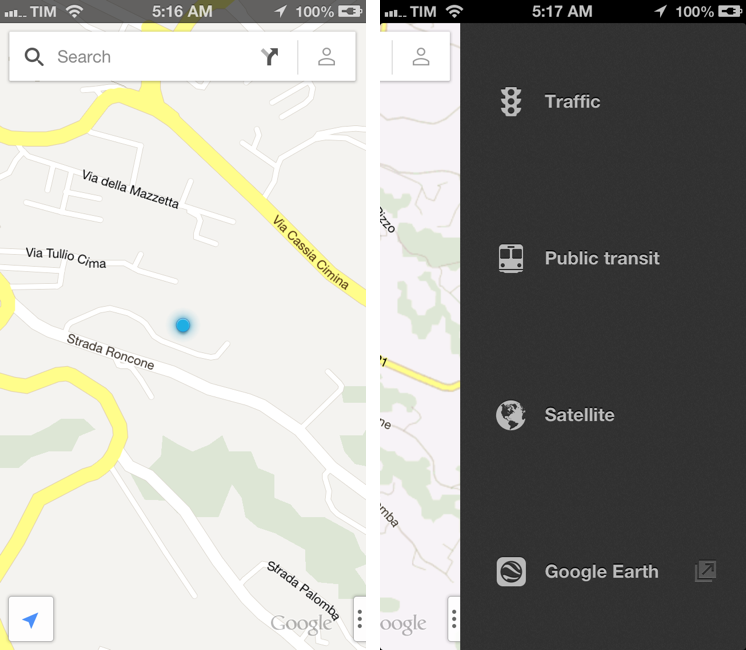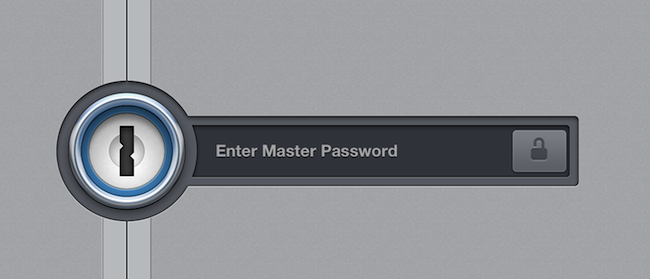PDF Expert 4.4 With PDF Converter Integration
PDF Expert by Readdle is my preferred PDF reader app for iPad. It comes with a polished UI, various annotation tools, and, more importantly, Dropbox sync. The latest update to PDF Expert for iPad, version 4.4, features integration with Readdle’s other PDF app, PDF Converter. As Readdle describes it:
Anyone who has already installed Readdle’s PDF Converter on the iPad can easily convert any files into PDFs from within PDF Expert. Once you send a document to convert in PDF (action button -> convert to PDF), it instantly converts to PDF and is saved back in PDF Expert for annotation. So far, users that have .doc, .pages, .ppt now can convert these file in PDFs and annotate them in PDF Expert.
I have tried the feature with .rtf files (which I often receive), and it works as advertised. Essentially, it works with a URL scheme that from PDF Expert can forward a document to PDF Converter (if installed); this is done through a “Convert to PDF” menu available in the upper toolbar of the document viewer. Once pressed, PDF Expert will send the document to PDF Converter, which will convert it and automatically send it back. I have asked Readdle whether this kind of integration was achieved using x-callback-url, but they told me they’re using their own implementation called RDIntegration.
I personally run my own remote PDF converter through Dropbox, but the option in PDF Expert works nicely and it’s entirely automated, so check it out if you’ve been looking for something like this on iOS and Readdle’s apps.









